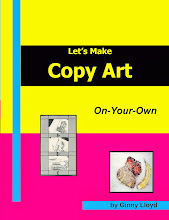I’ve been a collector most of my life. I started out as a child collecting
seashells, marbles, comics, stamps, posters, cameras, postcards, etc. I’ve managed to pare down most of these
collections with an over ambitious mother who gave away many of my childhood
collections. Now I am more focused in my
collecting practice adding to my largest collection, artistamps {artist made
stamps).
What is your collecting goal?
How will you add to your collection?
How can you attract
artists or find them for your collections?
How will you communicate with the artists?
What are the benefits of networking?
 |
| by Otto Sherman |
I’ve had success obtaining some of the items in my
collections on auction sites, have sold some of my own works online and I’ve
been happy with the results. Some tips follow
to help a new collector or a refresher for the experienced:
What is your collecting goal?
Pick a passion; something you are drawn to; create a focus to
your collecting and become knowledgeable of the art, the history, and the
artists. Give it your own point of view.
If you choose something unusual you may find your sources may be less yet your
finds can be more rewarding.
How will you add to your collection?
If you are on a budget and you make art too, you can trade
or barter. You can buy one piece at a time or if you prefer you can acquire
whole collections. Online auctions are
great for that. Don’t be shy about asking for a discount. Senior women artists are considered a good
bargain right now. They have established
a track record and usually make high quality art.
 |
| by Chuck Welch |
Social media is a wonderful way of locating other like minded
collectors and artists. This includes
websites, blogs, online auction sites for fine art like
Invaluable, and attending live auctions and exhibitions. Identify underappreciated artists or underappreciated
works by acknowledged artists for other sources of bargains.
On Facebook you can setup groups on themes to attract like
minded members to follow, put out calls for work and host discussions. Some of
my best tips have been found online. Tweet about your interests. When I first started posting my Gina LottaPost Artistamps Museum and Archive I was surprised by the overwhelming positive
response.
What are the benefits of networking?
You may find other collectors who will trade for works by an
artist you collect. Social media is a
great place to discover networking events and conferences, and congresses
.
.
How will you organize
and store your collection?
Creating a database at the minimum from the inception of
your collection will provide you with more access to the works, information
you’ve gathered for notes can be used for provenance and appraisals.
 |
| by Steve Smith |
Start your archiving of your records from the beginning by creating
and maintaining a database of some sort listing your acquisitions, the artist,
where they are located, and any other notes that you might want included. By starting this early it will be easier to
maintain instead of creating this database later. It may be more practical to uniquely
classify your collections by not archiving each in the same manner. For instance my film photography is archived
completely different from my digital photography based upon the usage and accessibility
of the digital. It’s easier to make multiple digital copies for subject files
where as the negatives have a contact sheet and a year and subject reference.
©2016 ginny lloyd










